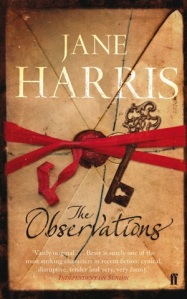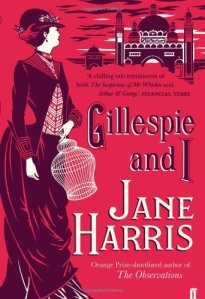Fiction – paperback; Polygon; 146 pages; 2018.
Oh. My. Goodness. This. Book. Is. Genius.
But don’t take my word for it. Irvine Welsh, in the introduction to this newly republished edition of The Sound of My Voice, describes it as “one of the greatest pieces of fiction to come out of Britain in the 80s”.
And Lizzy Siddal describes it as one of her “top 5 novels of all time” (her review is here). It was thanks to Lizzy that I got to read this book at all: I won a copy in a recent competition she hosted on her blog.
A man who has it all
The Sound of My Voice, which was first published by Canongate in 1987, is reminiscent of Jay McInerney’s Bright Lights, Big City but with one important difference: unlike McInerney’s unnamed narrator, an aspiring journalist whose marriage has fallen apart, the main character, Morris Magellan, has it all. He has an important job as an executive in a biscuit factory (hence the image on the front cover), a devoted wife, two children (whom he dubs “the accusations”) and a home of his own.
On the surface he looks like he’s leading his best life, but scratch a little deeper and you’ll see that he’s not. For Morris is a high-functioning alcoholic who’s struggling to keep all the balls in the air:
The thing about drink is knowing when to use it and not letting it use you. One drink’ll charge the system, get it in gear; but a second could be too much. Knowing when to drink and when to stop — that’s the trick.
He’s convinced himself that he’s in control of the bottle — “Yes, maybe you do have a drink now and again, but no one could say it affected your work” — but to the reader it becomes increasingly clear that he uses it to get through the day and to keep the rising tide of mud that surrounds him at bay.
Over the years you have become very skilful at sensing what is expected of you, irrespective of your own needs or wishes. You have never been accepted, nor have you ever tried to be; you have never loved, hated or been angry. Instead you have known only the anxieties of performance: that you do not make even one mistake by forgetting a line or missing a cue.
As Morris’ story unfolds — all narrated in the second person using a self-deprecating voice that is filled with sophistry and self-deception — we learn what is troubling him and how it all begins to unravel when he witnesses a horrific event on his way to work.
In that one moment, the restraining forces of over twenty years was suddenly released — tearing apart the darkness and yourself.
Dark humour
While the story is underpinned by pathos and a dark undercurrent that suggests all will not end well for Morris, there are many laugh-out-loud moments and scenes that would be absolutely hilarious if his behaviour wasn’t so appalling. The use of the second-person narrative puts us right in Morris’ head, making us complicit in his crimes and unable to restrain the worst of his excesses. He spends every day trying to avoid the voice in his head which is hell-bent on self-destruction.
It is his poor devoted wife that one feels sorry for, and yet we never hear her side of the story; she’s always filtered through Morris’ eyes. I longed to understand whether she truly understood her husband’s problems or whether she was too self-obsessed to notice; we never find out.
In the Afterword to this edition, the author says he “poured my heart and soul into this novel”. You can tell. The Sound of My Voice is a wonderfully perceptive portrait of the lies we sometimes tell ourselves to get through modern life. It brims with compassion, humanity — and kindness. Five stars.











